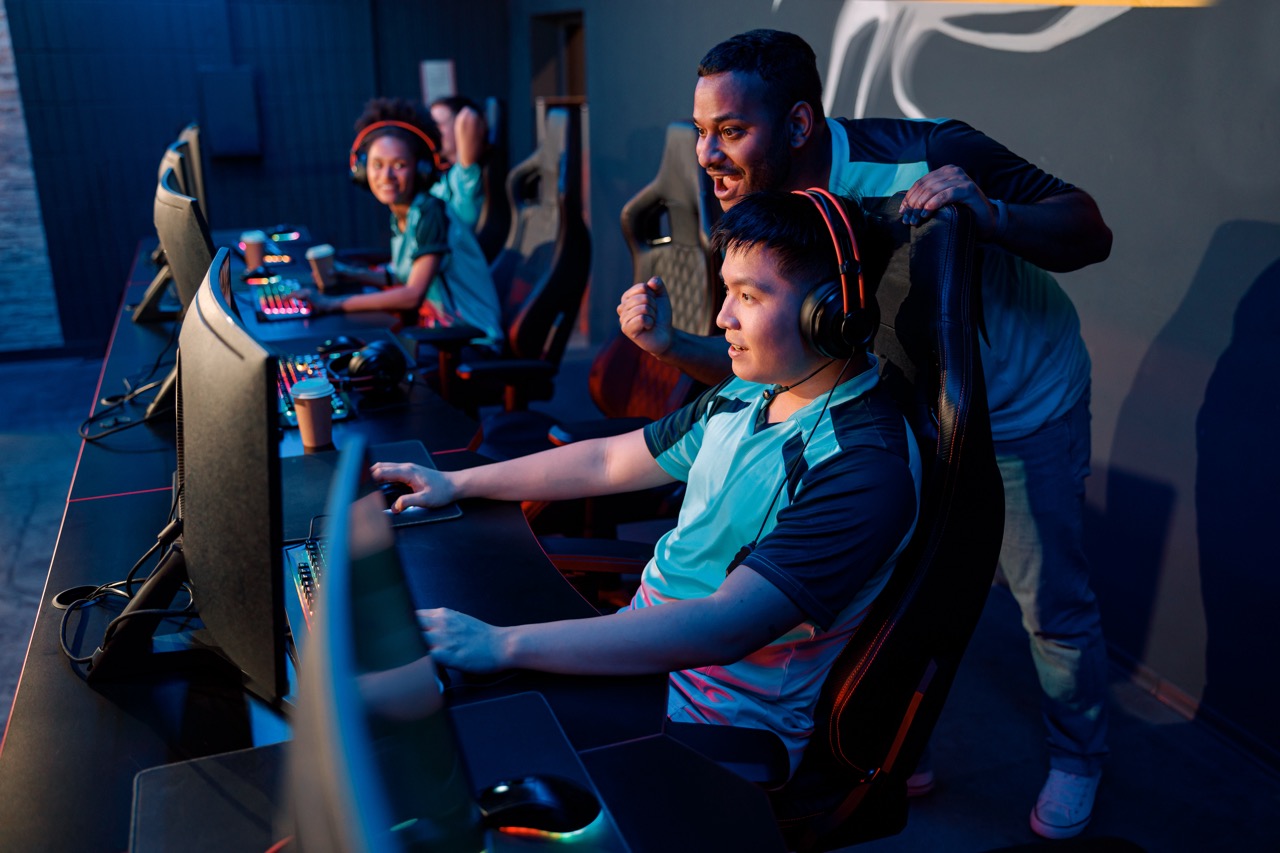Game design isn’t just about creating visually stunning graphics or intricate mechanics; it’s also deeply rooted in psychology. Developers leverage our understanding of how the human mind works to craft experiences that resonate with players on multiple levels. From the thrill of leveling up to the emotional weight of a compelling story, psychology plays a crucial role in keeping players engaged and coming back for more. Let’s dive into how game designers harness these psychological principles to create addictive experiences.
Understanding Player Motivation: The Psychology Behind Gaming
At the heart of every gaming experience is player motivation, and game designers tap into various psychological theories to keep players hooked. One of the most prominent theories is Self-Determination Theory (SDT), which emphasizes the importance of autonomy, competence, and relatedness. By offering players choices and a sense of achievement, games can satisfy these basic psychological needs. For instance, an open-world game may allow players to choose their quests, fostering a sense of autonomy while also providing challenges that enhance their skill level.
Another aspect of motivation comes from intrinsic and extrinsic rewards. Intrinsic rewards are the internal satisfactions we get from playing, such as enjoyment and fulfillment. Extrinsic rewards, on the other hand, are external factors like achievements, badges, or in-game currency. Game designers cleverly balance these two to create compelling experiences. Think of how satisfying it feels to unlock a new weapon or character after completing a challenging quest—this blend of motivation keeps players returning to the game.
Moreover, game design often employs the concept of "flow," a state where players lose themselves in the activity. This state is achieved when a player’s skill level perfectly matches the challenges presented by the game. Designers carefully calibrate difficulty levels to maintain this flow, creating an engaging experience that feels just challenging enough without being frustrating. This balance is crucial; players are more likely to stay engaged when they feel challenged but not overwhelmed.
Finally, understanding the psychology of addiction helps designers create environments that encourage repeated play. Features like daily rewards, limited-time events, and persistent progression tap into the brain’s reward system, making it difficult for players to step away. These strategies are designed to keep players invested in both short and long-term gameplay, ensuring that they stay engaged over extended periods.
The Role of Rewards: Why We Love That Next Level Up
Rewards are a cornerstone of game design, serving as both a motivational tool and a way to create a sense of accomplishment. When players achieve something, whether it’s completing a level, defeating a boss, or collecting an item, the brain releases dopamine, a neurotransmitter associated with pleasure and reward. This chemical reaction not only feels good but also encourages players to repeat the actions that led to this reward, creating a positive feedback loop.
Designers often implement a tiered reward system that allows players to anticipate their next achievement. For example, leveling up in a role-playing game usually involves a series of milestones, each with its own rewards. Players are driven by the desire to unlock new abilities or access exclusive content, and this anticipation keeps them engaged. The thrill of the next level up becomes a powerful motivator that keeps players coming back to the game.
Moreover, the concept of variable rewards plays a significant role in player engagement. This principle, rooted in operant conditioning, suggests that unpredictable rewards can create a stronger emotional response than consistent ones. Games that offer random loot drops or surprise bonuses effectively capitalize on this principle. Players are motivated to keep playing, hoping to receive that elusive item or achievement that could propel their progress.
Lastly, social recognition acts as a potent reward in the gaming world. Sharing achievements on platforms like Twitch or Discord allows players to showcase their accomplishments to a community. This not only enhances their enjoyment but also creates a sense of belonging, further reinforcing the desire to continue playing. The social aspect of rewards has become an integral part of modern gaming, encouraging players to engage in healthy competition and collaboration.
Immersion and Flow: Keeping Players Engaged and Focused
Immersion is what makes gaming experiences truly captivating, and achieving it often involves creating an environment where players can become completely absorbed in the game world. Game designers utilize various techniques, such as rich narratives, stunning visuals, and engaging sound design, to enhance immersion. An immersive experience allows players to feel as though they are part of the game, which elevates the stakes and increases emotional investment.
Flow, as mentioned earlier, is a state of complete focus where players are fully engaged in the task at hand. To achieve flow, designers must skillfully balance challenges and the player’s skill level. A well-designed game gradually increases difficulty, ensuring that players are continually challenged without feeling overwhelmed. This delicate balance keeps players engaged for longer periods, as they are constantly striving to improve and overcome new obstacles.
The design elements that contribute to immersion also extend to the game mechanics themselves. For example, user interfaces that are intuitive and unobtrusive allow players to focus solely on the gameplay. When the mechanics feel natural and seamless, players are less likely to become frustrated and more likely to maintain their flow state. Additionally, incorporating sensory feedback—such as haptic vibrations or sound cues—can deepen the immersion, making the player’s experience feel more tactile and real.
Finally, creating rich, narrative-driven content helps to further immerse players in the game world. Storytelling that resonates emotionally can keep players engaged for hours, as they become invested in the characters and plot. When players feel a connection to the story, they are more likely to push through challenges and continue their journey, making immersion a powerful tool in the game design arsenal.
Social Interaction: How Community Shapes Our Play Experience
The social dynamics of gaming cannot be underestimated. Many modern games incorporate multiplayer elements, enabling players to connect with others around the globe. This connection fosters a sense of community, making the gaming experience not just about individual achievement but also about shared experiences. Players often form friendships, collaborate on challenges, and compete against one another, creating a social fabric that enhances the entire gaming experience.
Game designers tap into the psychology of social interaction by incorporating features that encourage teamwork and communication. For instance, cooperative gameplay mechanics require players to rely on each other to succeed. These team dynamics can lead to a deeper sense of belonging and camaraderie, making players feel like they are part of something larger than themselves. This social aspect can be particularly appealing to those who may feel isolated in other areas of life.
Moreover, competitive gaming, or esports, adds another layer of social interaction. Players often strive to improve their skills, but doing so in a competitive setting allows them to showcase their talents and earn recognition within the community. This drive for social validation can motivate players to grind for better stats or ranks, ultimately enhancing engagement and investment in the game.
The role of community is also reinforced through platforms like Twitch, where players can stream their gameplay and interact with viewers in real-time. The feedback received from viewers can create a rewarding experience for streamers, motivating them to continue playing and creating content. This dynamic interaction bridges the gap between players and spectators, fostering a rich environment where gaming becomes a shared experience.
The Power of Storytelling: Emotional Ties to Gameplay
Storytelling is one of the most potent tools in a game designer’s toolbox. A well-crafted narrative can draw players in and keep them invested in the game world. Story arcs that feature relatable characters, emotional stakes, and unexpected twists create an immersive experience that resonates deeply with players. When players care about the characters and their journeys, they are more likely to stay engaged with the game.
Emotional engagement can manifest in various ways, from the thrill of victory to the pain of loss. Games that feature high-stakes scenarios, such as saving a beloved character or overcoming a personal struggle, can evoke powerful emotions. This emotional resonance can lead players to form attachment not only to the story but also to the mechanics of gameplay itself. The result? Players are more likely to keep playing to discover how the story unfolds.
Moreover, branching narratives and player choices add another layer of depth to storytelling in games. When players have the power to influence the outcome of the story, it fosters a personal connection to the game. This sense of agency allows players to feel like their decisions matter, enhancing their emotional investment in the game and encouraging them to explore alternative paths and multiple endings.
In addition, storytelling can also facilitate social interactions, as players often discuss plot points and character developments with friends or online communities. These discussions can enhance the overall experience, making players feel like they are part of a larger narrative. By intertwining gameplay with compelling stories, designers create an emotional tapestry that keeps players engaged and invested in the game long after they’ve put down the controller.
Balancing Challenge and Skill: The Sweet Spot for Fun
Finding the ideal balance between challenge and skill is critical for creating a fun and engaging gaming experience. If a game is too easy, players may quickly lose interest; if it’s too difficult, they may become frustrated and give up. Game designers carefully calibrate these elements to ensure that players feel a sense of accomplishment while still facing obstacles that demand their attention and skill.
The concept of the "zone of proximal development" is particularly relevant here. This educational theory suggests that learners can only tackle challenges that are slightly beyond their current abilities. Game designers apply this concept by introducing new mechanics gradually and escalating the difficulty level in a way that feels organic. This method helps players improve their skills while simultaneously keeping them engaged in the game.
Feedback systems also play a vital role in maintaining this balance. Immediate responses to player actions, whether through visual effects, sound cues, or narrative feedback, help players understand their progress and areas for improvement. When players receive positive reinforcement in the form of rewards or acknowledgment for overcoming challenges, they are more likely to feel motivated to keep playing.
Finally, the social aspect of challenge and skill can further enhance player engagement. Friendly competition, whether through leaderboards or co-op challenges, encourages players to push their limits. When players share their achievements and progress with others, it creates a sense of community and accountability that can drive continued play. The sweet spot between challenge and skill is not just about individual enjoyment but also about fostering










